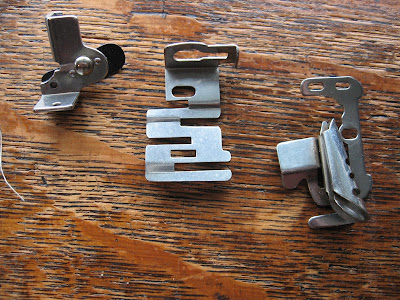I don't know if this might help or interest anyone out there, but I'm putting together a series of Getting to Know my Antique/Vintage Singer Sewing Machine (Singer 127). Today I learnt about Thread.
I would like to ask any sewing machine experts to please point out anything I'm doing wrong. I'm a self taught sewer and am learning about the machine by working my way through the manual.
I'm sewing away at my treadle antique Singer sewing machine (model 127), which I have named beautiful sphinx because of the pretty decals it has on it, and I'm amazed at how fast it can sew. It takes no perceptible effort from me to treadle this machine and sew just as quickly as on any electric machine I ever met. It's so interactive. I can slow down or speed up without thinking. Maybe it's a symptom of spending so many hours at a spinning wheel but I tell you, sewing on a treadle machine is the cat's meow!
Sewing is no longer an endurance challenge I undertake to acquire clothing, it is now a joyful process in and of itself.
Which is good news because I've been sewing a lot lately. A wonderful shop commissioned me to sew cloth bags for their store. The bags will then go to another local person who will silk screen the shop's logo on it. It feels really neat to be part of a local economy like that.


As for the sewing machine. I had the most frustrating morning yesterday. Every time I would get into the rhythm of sewing, something would go wonky. The biggest problem I had was this.

Can you see how the top thread seems to be fraying? It's like 1 ply of the thread has broken and just refuses to continue sewing. Of course it only does this when I am top stitching so that I have to undo a bunch of sewing every time it happens.
Whenever something goes wrong with the sewing machine, my first remedy is to re-thread everything. This fixes about 75% of problems. The second remedy is to clean the machine of any lint and give it a bit of oil. This solves just about all the troubles that sewing can produce. But sometimes that isn't enough. This seems to be one of those times.
I thought that since the thread was fraying above the needle, that maybe the needle was bent. I changed the needle and it didn't happen again. But it has happened before, with different needles. So I'm wondering if the size of the needle is too small for the thread. I am using regular thread but size 10 needle. Thoughts?
Did you know that not all sewing machines take the same size needle? Some of the older ones require special size needles.




























